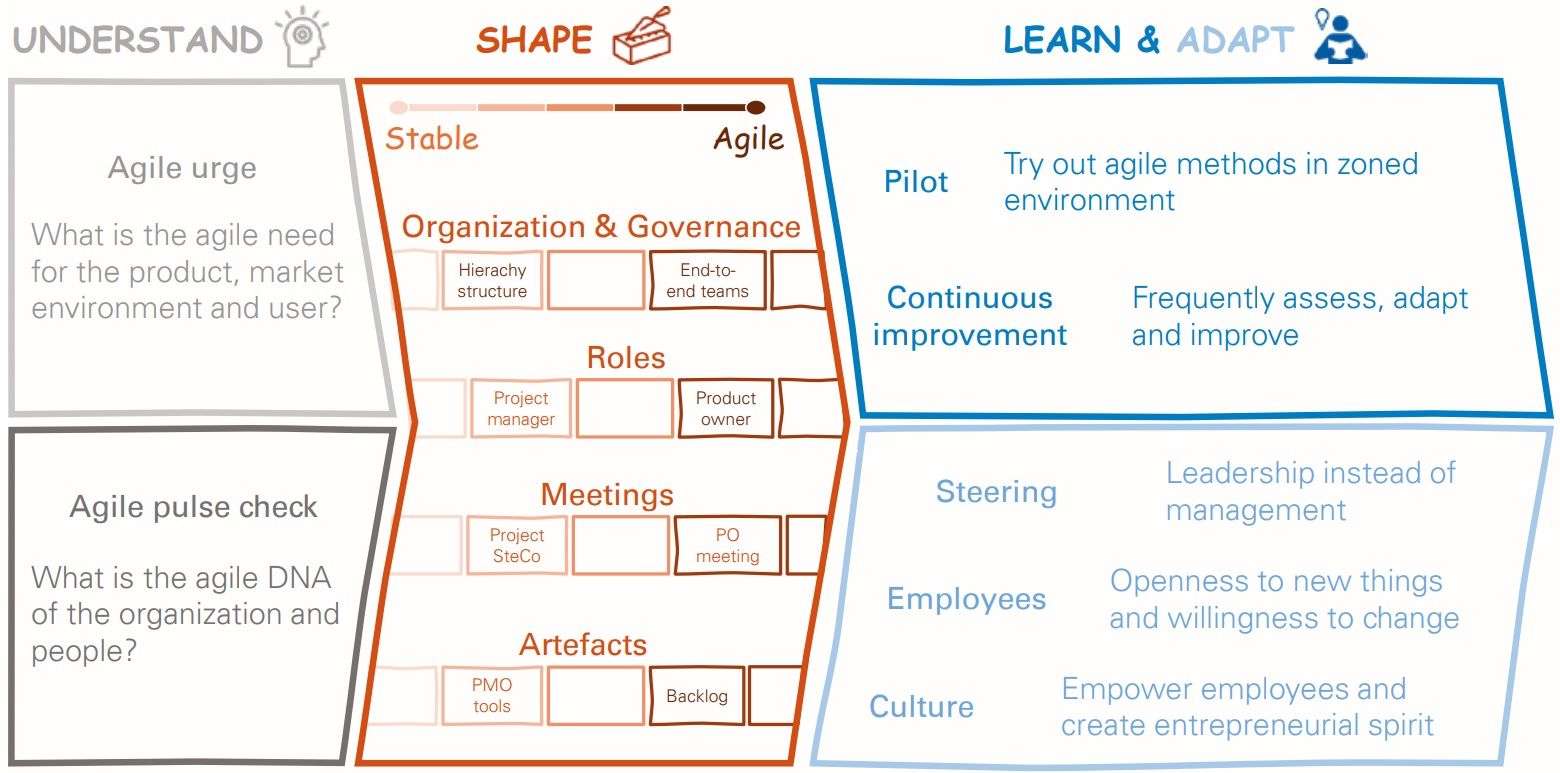
DOWNLOAD
DATE
Contact
Being capable to react to change with agility is a key requirement for all companies onboarding digital business models or digital products and processes. It is becoming even more of a necessity to compete. Yet large and grown companies, in particular, see many challenges with the necessary balance between agility and stability – implementing agile methodologies outside the technical domain fails in many cases for many reasons.
One big cause of failure is the attempt to apply one of the many off-the-shelf agile models to a large organization. These typically work well for small companies of the internet economy, but not so much in large corporate set-ups. This article offers a framework to scale and customize an individual, tailored agile approach, catering to specific requirements of the organization. These needs are assessed in the initial “understand” phase. It then offers a methodology to pick building blocks from the many agile concepts available that “shape” a working model according to the needs of your enterprise. Answering the question of how to “learn” and “adapt” after the pilot launch of an end-to-end agile process, the report gives concrete examples of how large corporations have overcome imminent obstacles.
1. Agility is the new black
Companies are looking for ways to adjust not solely their business models, but also their organizational setups: agility and flexibility of processes, structures, ways of working and culture are becoming the new paradigm. However, larger firms need to balance becoming more agile and flexible with retaining stability in certain core processes to ensure productivity at scale. Agility is certainly the trend, but is not the whole story.
Where can companies do business as usual, and where is there a need to change fundamentally? How do they find the right entry points and approaches to transform?
The challenges
The current set-ups of many large organizations are not suitable for rapidly changing environments, meaning that these companies are struggling with the ability for fast-paced product and service development, as well as internal projects and business process changes. While agile methodologies are familiar to many executives, often they are solely associated with IT, which means the wider organization misses the opportunities they offer for transformation. Additionally, many companies that try to implement agile outside the IT domain fail due to lack of understanding or insufficient readiness, or poor implementation. They struggle to combine agile and traditional principles in a way that delivers the benefits of both, and in so doing fail on both counts. How can this scale-up be achieved, and how far-reaching does the process need to be?
A framework to find the right amount of agility
We use a simple framework that makes it possible to address these challenges and determine how much agility a certain area needs. Agile elements can be applied for a variety of business situations and topics, in a way that retains empowerment and simplicity, and avoids upfront over-specification. It can span single teams, smaller processes, customer needs or business services, projects with budgets of several hundred million euros, entire product lines or even the complete agile reshaping of large business units. This framework comprises four main action points: UNDERSTAND, SHAPE, LEARN and ADAPT.



